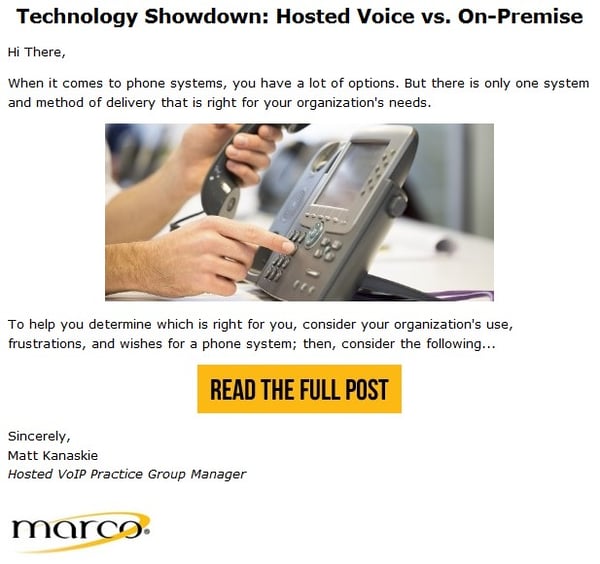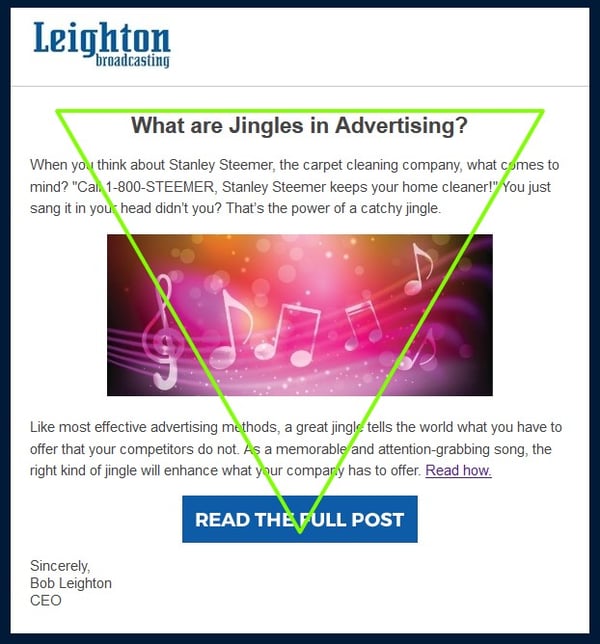
Let’s say you’re sitting at your favorite local bar enjoying a craft beer. While chatting away about life, liberty, and the pursuit of happiness with your buddies, in walks a drop-dead gorgeous bombshell. Your heart skips a beat, awestruck with her beauty and poise. Being the outgoing guy you are, you don't hesitate to introduce yourself.
"Hey. I just met you… and this is crazy, but… will you marry me?"
Yep. You went all Frozen style “ask someone you just met to marry you” on her.

What do you think her answer is going to be? How do you think she’s going to feel about you after an introduction like that?
Did you know that we dislike companies for the same reasons we dislike people? Because they’re rude, pushy, arrogant, and selfish.
This post is all about how to humanize your email messages, and thus greatly increase your chances of them pulling the trigger on that email you worked so hard for them to open. Now, you want them to click.
Before I go any further, let’s recap what we’ve learned so far. This is Part three of a four-part series all about email marketing and how you can make the most of it. Here’s a quick summary of each post in the series.
- Capture – you’ll need email addresses and associated contact information so you can segment your mailing lists.
- Open – this step is all about ways to improve your open rates. Read it here.
- Click – now that your email has been opened, you need the recipient to click. (That’s this one!)
- Convert – the final step is optimizing your landing page so users convert. Read it here.
Now that you’ve persuaded the recipient to open your email message, you need to earn a click. As Flint McGlaughlin, Managing Director for Meclabs once quipped:
“The goal of any email is to get a click. No more, no less.” -Flint McGlaughlin
Right. That’s great. But how do you actually accomplish such a feat?
Don’t Sell via Email
Leave the sales pitch to the landing page. Here’s a simple test. If the email looks like a landing page, you’re doing it wrong. Be careful not to let the objective of the landing page takeover the objective of the email. They both have their place and purpose. The most effective emails are simple and easy to understand. Let the landing page do the heavy lifting for you.
If the only goal of an email is to get a click, then you need to build suspense within the email copy. Leave the reader wanting to know more. How do they get more? By clicking. Here’s an example:

Right out of the gate, the headline of this email builds suspense: “Technology Showdown.” It sounds exciting. And dangerous! Then, it subtly gets the reader to wonder about their own phone system with “… lots of options, but only one system and method of delivery is right for your organization …”
Finally, notice how the email wraps up with a sentence trailing off? “Consider the following …” Now the user has to click to find out. Genius, isn’t it?
And guess what? The landing page is actually a blog post, and it uses a similar title as the headline of the email and the exact same image.
Pro Tip: Write the email and landing page together. Or if the email is to direct clicks to an existing page, pull copy from it to use in the email. This approach allows you to use the same verbiage and imagery to make the transition from email to landing page feel organic and fluid. This is called continuity, which is simply consistency through multiple steps.
Clarity Trumps Persuasion
Don’t be cutesy or overly creative with your email copy. Short, concise, and to-the-point wins every single time. This is where a professional copywriter is worth their weight in gold. Good copy is tough, but don’t skimp on it. Spend 80 percent of your time on writing copy. And find a way to make it shorter and punchier. Don’t waste words or sentences. The best way to improve an email is with scissors.
Marketers have a bad rap (deservedly so) for bastardizing everything we touch. We attempt to beat competitors with greater claims and bigger promises, resulting in major distrust from the consumers we claim to be solving for. Don’t do it. Use your words wisely. Don’t make exaggerated claims or use language ripe with pomp and circumstance. That’s a surefire way to make a reader reach for the delete button.
All of that said, just know that you can’t polish a turd. No amount of copywriting and wordsmithing can make an ugly product or service sound attractive. Fix the product first. Then make it shine with outstanding email copy.
Pro Tip: Keep the goal of the email in mind (hint: it’s to earn a click). If there is anything in the message that distracts in any way from a click, then get rid of it.
The Inverted Pyramid
I’ve touched on this already in other posts, but I bring it up here because it’s an essential element of almost any email. Psychologically speaking, human eyes look for patterns and follow visual cues instinctively. Use this to your advantage. Arrange the elements of your email (headline, images, copy, etc.) to guide the eye towards the prize.
Here’s an example:

That’s one of the most successful emails we’ve created for this client, and the inverted pyramid overlaid on top makes it obvious why it works so well. The headline asks an open-ended question. The copy opens with a reference to a familiar jingle – Stanley Steemer – and then starts to answer the question posed in the headline. But wait! To get the full answer, you need to click. (There’s the suspense.)
Pro Tip: Make sure to include a text link to the landing page. Most email clients disable images by default. A text link still gives the user a chance to click without having to load the images.
Bonus Pro-Tip: For developers, add a CSS background color to any images in the email template. This way, when images don't load there will be a fallback color to let the user know that something should be there.
Readers Don’t Trust You
It’s the simple, but honest, truth. Accept it. Then work with it. Use that fact as you craft email copy, choose images, and write headlines. With every choice, ask yourself, “Will this help the reader to trust me more?” If not, don’t choose it.
As Simon Sinek believes, "people don’t buy from companies. They buy from people." Does your email sound like a company or a person?
If you believe that to be true, then don’t treat your email recipients as targets to market to. Treat them as people to communicate with. So, don’t talk about yourself (remember, we dislike companies for the same reasons we dislike people).
Your email copy should connect to a problem – an actual problem, not one you’ve manufactured yourself – and then offer a simple solution.
Pro Tip: Write like you talk. And then read it out loud to yourself. Your copy should sound like something you’d say to a friend over lunch, not like a pitch from a used car salesman.
Putting It All Together
Who would have thought that earning a click would be so complicated? Throughout this post, I’ve used the term “earn” intentionally, because that’s what you’re doing. If you want a click, you need to earn it. You don’t get one by default just because you sent an email. You need to work for it.
Over the years, marketers have used all the hype that money can buy trying to goad users into taking some sort of action. Whether it’s picking up the phone, stopping by a store, or clicking an email. As responsible email marketers, it’s our job to work around the natural consumer distrust and provide value to them. The tips I’ve provided here are good starting points to restore trust, but they’re not the end-all, be-all.
